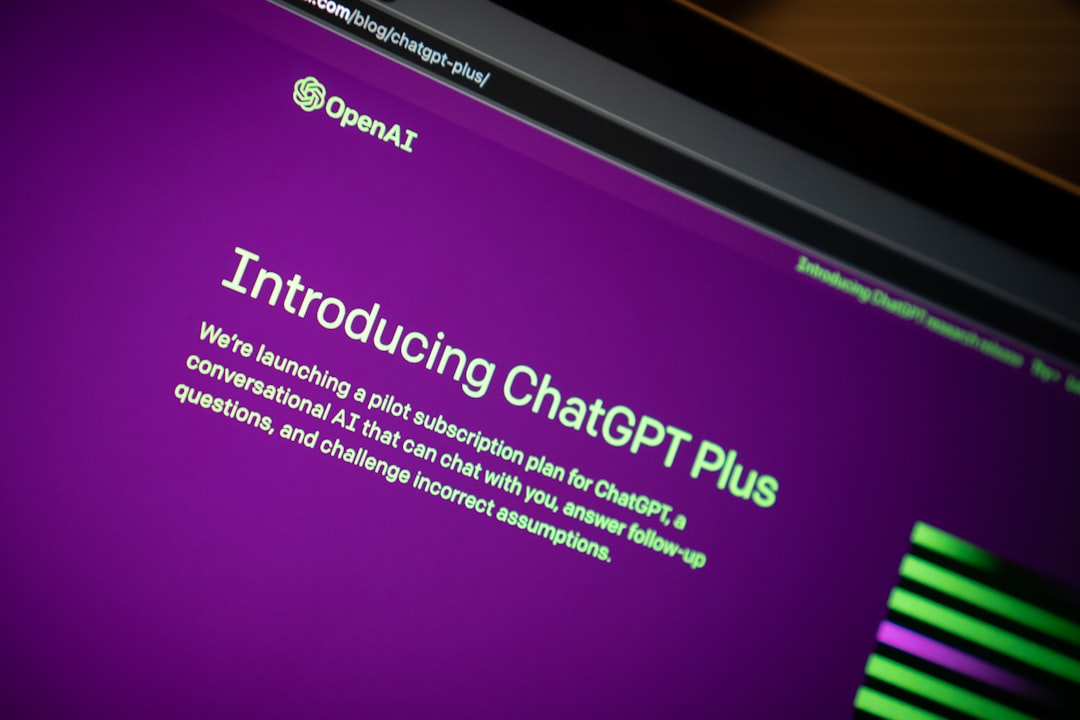- The Deep View
- Posts
- ⚙️ In light of Apple Intelligence, it’s time to talk about The Cloud
⚙️ In light of Apple Intelligence, it’s time to talk about The Cloud

Good morning. All this talk of Apple Intelligence and the private cloud it will partially rely on got me thinking about the cloud, the internet & the security architecture that comes with it all.
So I dove in. Read on for the whole story.
🍀 AI for Good: A helping hand for conservationists
🏛️ Elon Musk drops his lawsuit against OpenAI
🇪🇺 Regulation won’t limit AI innovation in Europe
☁️ In light of Apple Intelligence, it’s time to talk about The Cloud
This week, our Real/AI theme was food. What should it be next week? |

AI for Good: A helping hand for conservationists

Photo by Gwen Weustink (Unsplash).
The big pitch for AI technologies is simple: There is just too much data out there for humans to process.
That fact has made technology a practical partner of conservationists for decades, according to geographer and computational social scientist Metolo A. Foyet.
A timeline: Nature conservationists began employing machine learning techniques in the ‘90s to help parse ecological data and classify land cover.
In the 2000s, they started using computer vision and ML for species identification and habitat monitoring.
More recently, ML tools have been cropping up that are designed for conservation efforts.
One of these is the aptly named Conservation AI.
The organization, partnered with a number of conservation groups, applies machine learning technology to instantly (and in real-time) identify animal species, humans and man-made objects from videos, images and audio.
Why it matters: The trends that result from this wide-scale classification enable researchers to better understand the health of certain ecosystems, allowing them to “make informed decisions and take prompt actions in their critical efforts to safeguard our natural ecosystems.”
Elon Musk drops his lawsuit against OpenAI

Photo by Jonathan Kempler (Unsplash).
In a bit of a surprise turn late Tuesday, Elon Musk dropped his lawsuit against OpenAI and two of its cofounders: Greg Brockman and Sam Altman, according to CNBC.
Musk’s move came a day before a scheduled hearing in which a San Francisco judge would have ruled on OpenAI’s motion to dismiss the case.
The background: Musk initially filed the suit in February, alleging breach of contract & breach of fiduciary duty, among other things. His main point was that OpenAI started as a nonprofit research lab and “has been transformed into a closed-source de facto subsidiary of the largest technology company in the world: Microsoft.”
Legal experts I spoke with at the time said the legal foundations for the suit were shaky at best.
For context: Musk co-founded OpenAI alongside Altman and the others back in 2015. He left the board in 2018 and more recently launched a competing AI startup called xAI.
In March, OpenAI responded to the lawsuit, publishing a series of emails from 2016 in which co-founder Ilya Sutskever said: “As we get closer to building AI, it will make sense to start being less open.”
Together with Vanta
Watch Now: How to Demonstrate Secure AI Practices with ISO 42001
As AI becomes more ubiquitous, so does the need to prove your AI practices are secure.
ISO 42001 was introduced by the International Standards Organization to fulfill this need. This framework helps companies demonstrate their organization’s security practices around AI in a verifiable way.
Watch the on-demand session with Vanta and A-LIGN on ISO 42001 to learn more about what it is, what types of organizations need it, and how it works.
Regulation won’t limit AI innovation in Europe

Photo by Guillaume Périgois(Unsplash).
The European Union is known for being a stricter regulator than the U.S. And indeed, the EU was the first to get a handle on AI regulations.
But the idea that its regulations will hinder innovation, according to the French data protection authority CNIL, is “flawed.”
The Details: CNIL published a series of recommendations for developers on how to comply with both the GDPR and the AI Act.
The recommendations target developers who process personal data.
CNIL said that the first step toward compliance involves clearly and explicitly stating the purpose of a model that processes personal data.
CNIL added there must be a “legal basis” for the use of personal data & that such data cannot be stored indefinitely.
“The personal data collected and used must be adequate, relevant and limited to what is necessary in the light of the objective defined. You must respect this principle and apply it rigorously when the data processed is sensitive (data concerning health, data concerning sex life, religious beliefs or political opinions, etc.).”

💰AI Jobs Board:
AI Analyst: Columbia University IT · United States · New York Metro Area · Full-time · (Apply here)
Senior Machine Learning Engineer: Health at Scale Technologies · United States · San Francisco Bay Area · Full-time · (Apply here)
AI Research Engineer: Gloo · United States · San Francisco Bay Area · Full-time · (Apply here)
🕋 Events: *
Join Nvidia, OpenAI, Google at AIQCon (and snag some free swag)
Time is running out for you to snag tickets to attend Kolena’s AI Quality Conference (San Francisco on June 25). You’ll get the chance to engage with experts from the world’s biggest names in AI and build the future of AI Quality. They're covering the essentials: accuracy, robustness, bias mitigation, scalability, ethical considerations and more.
TDV readers can purchase tickets here for 50% off using TDV50. Only a few tickets are left — get yours now!
🌎 The Broad View:
*Indicates a sponsored link
Together with Reforge
Reforge, known for its top-notch educational content, is hosting a free virtual conference focused on product development, marketing, and growth in the AI era.
It's on June 25th — don't miss this opportunity to learn how to navigate the future from the people currently defining it. Register here for free.

What even is The Cloud, anyway?

A shot of Google’s Mayes County, Oklahoma datacenter (Google).
Imagine, for a moment, that you were floating on the surface of the Atlantic Ocean. Now, if you were to dive to the floor of that ocean — and then dig a bit — you would uncover a vast network of cables (around 750,000 miles worth, as of 2019) that connect modern society.
It is because of these cables that I’m speaking to you, right now.
Think of these cables like a data highway — information on the internet, translated into bits and bytes, travels through this infrastructure at the speed of light, according to Cloudflare, making the internet tick.
The Cloud: Like the internet, “the cloud” relies on tons of physical hardware. It enables people and businesses to store, access and run information and applications (Google Drive, Netflix shows, ChatGPT) through the internet, rather than on-device. This saves storage space & enables applications to run faster.
But what the cloud actually refers to is a network of global remote servers. These servers exist in far-away datacenters, which consist of stacks of computing equipment (storage drivers, servers, network equipment and computer chips).
Quick note: Datacenters consume an enormous amount of electricity and water (even more since the AI boom).
Security in the cloud: Data breaches spiked to historic levels in 2023, a result of certain vulnerabilities to the cloud. Part of the reason behind this involves misconfiguration, where companies misuse the cloud. Another part involves encryption.
Standard cloud security usually involves some level of encryption. The servers that run Google Drive, for instance, encrypt data at rest and during transit — but there’s at least one weak point to this setup: The data has to be decrypted when it’s used.
Yet another problem is that not everyone encrypts their data in the first place (this falls under the misconfiguration category).
Apple Intelligence: Since Apple announced its AI integration, which will rely partially on the company’s new private cloud service, there has been a lot of concern about data security and privacy.
Still, it seems to be a secure cloud: No data retention, no privileged access for Apple, custom secure hardware, non-targetability (which masks user requests) and transparency.
Whatever it is, you’re likely protected from Apple looking at your data.
But Apple said that, although end-to-end encryption is the best cloud safeguard out there, processing AI requests “requires unencrypted access to the user's request and accompanying personal data.”
Fully Homomorphic Encryption: Apple’s systems may well be as secure as it gets (cryptographer Matthew Green said that the company is taking advantage of “almost all” computer security innovations out there to secure its cloud; good enough might be good enough). But it does highlight the broader security challenges of the cloud, which reminded me of a conversation I had last year with a semiconductor startup called Chain Reaction that’s working to commercialize Fully Homomorphic Encryption (FHE).
FHE offers true end-to-end encryption. Data protected by FHE doesn’t ever need to be decrypted, meaning it can stay encrypted at rest, in transit and in use.
But it’s expensive and requires a new kind of hardware to run.
My View: Based on current trajectories, the cloud is just going to keep growing as more companies embrace AI. And it will be interesting to see if/how — and how quickly — the architecture behind these cloud solutions changes and evolves to make room for the stronger privacy and security protections that seem to be such a pressing concern.

Have cool resources or tools to share? Submit a tool or reach us by replying to this email (or DM us on Twitter).
*Indicates a sponsored link
SPONSOR THIS NEWSLETTER
The Deep View is currently one of the world’s fastest-growing newsletters, adding thousands of AI enthusiasts a week to our incredible family of over 200,000! Our readers work at top companies like Apple, Meta, OpenAI, Google, Microsoft and many more.
One last thing👇
would say I'm probably months away from very seriously considering investing in a brick phone and an mp3 player and throwing my smartphone into the Thames
— Marie Le Conte (@youngvulgarian)
10:06 PM • Jun 10, 2024
That's a wrap for now! We hope you enjoyed today’s newsletter :)
What did you think of today's email? |
We appreciate your continued support! We'll catch you in the next edition 👋
-Ian Krietzberg, Editor-in-Chief, The Deep View








